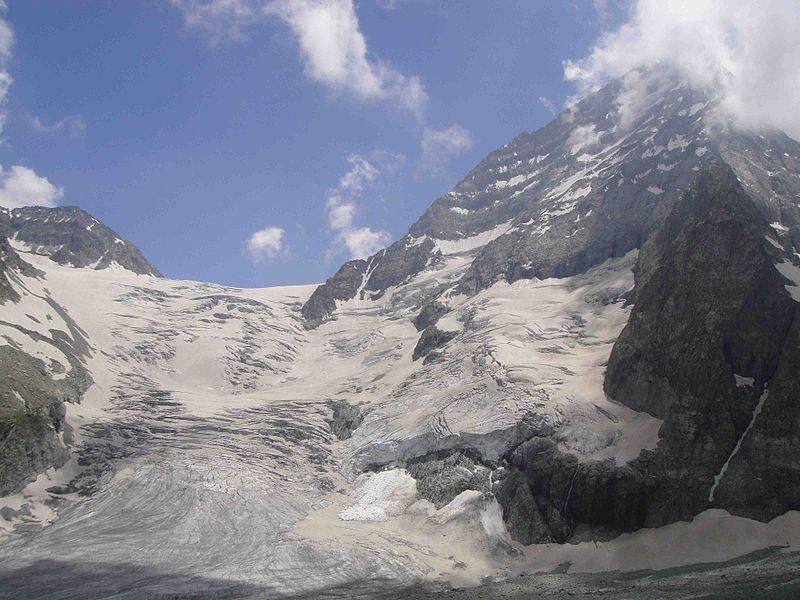September 2009
The name Kashmir invariably conjures up two very different images. The first is that of a green paradise nestled in the Himalayas, famed for its apples, apricots, saffron, and the Raj-era houseboats serenely floating in Srinagar’s Dal Lake. The second is that of a war-torn hellhole split between India and Pakistan, a source of unending antipathy and conflict between the two nuclear-armed states. Today, a third image jostles for attention—that of a region shortly to feel the full impact of climate change which will have enormous implications for the people and their environment.
The glaciers that water the Valley of Kashmir, like glaciers across the Himalayan range, are melting at an unprecedented rate. The Himalayas contain the largest store of fresh water outside the polar ice-caps, feeding rivers upon which up to two billion people depend. But despite the enormity of the threat—or perhaps because it is simply too overwhelming—the governments of South Asian countries are doing little in the way of mitigation. In the case of conflict-wracked Kashmir, this lack of preparation is especially pronounced. Until very recently, the region has been too politically unstable to allow scientists to monitor glacial retreat, essential to formulating a response to future environmental change.
“There is a dearth of information in India,” says Professor Syed Hasnain of The Energy and Resources Institute (TERI). “We have no data on temperature, humidity, rainfall, greenhouse gases or Asian Brown Cloud (the drifting South Asian smog that could be a factor in raising temperatures). Various models suggest that heat is being generated by this, but we have to establish a scientific link.”
In August 2008 I joined Hasnain on a visit to the Kolahoi glacier which lies just a few miles from the Line of Control that separates Indian from Pakistani controlled Kashmir. The purpose of the expedition was to assess the glacier’s suitability for inclusion in an index of benchmark glaciers spanning the Himalayas from east to west, part of a long-overdue attempt to monitor the rate of decline across the range. After two days on foot over difficult mountainous terrain, what we discovered was even grimmer than expected. The glacier’s accumulation area—where snow packs down to form new ice—appears to have almost entirely converted into ablation, which would mean it has entered a state of irreversible melting. According to the inhabitants of the nearby village of Aru, in 1985 the glacier’s snout stretched half a mile further down the valley.
“This is the headwater for Kashmir,” says Dr Ghulam Jeelani from the University of Kashmir, who accompanied the expedition. “If glaciers like Kolahoi disappear, Kashmir could go from being a water-rich area to an area of water stress.” At its present rate of decline, Jeelani believes this particular glacier could vanish in a mere 10 years.
Kolahoi itself might be doomed, but by studying its decline, TERI will gather much-needed information on exactly why glaciers are melting—and what can be done to counter the effects. Although this case corresponds to an overall pattern of glacial retreat throughout the Himalayas, glaciology is a complicated business, and many local climatic factors must be taken into account before future impacts on the environment can be predicted with any accuracy.
At the moment, we can only guess what the future of Kashmir might hold, based on scenarios elsewhere in the Himalayas. Of particular concern is the formation of large, unstable lakes of melt-water, which can burst their banks without warning and devastate downstream populations; these glacial lake outburst floods have frequently occurred in Bhutan and Nepal. Hasnain estimates some Indian rivers could initially see their flow increase by up to 30%, leading to widespread flooding, followed by severe water shortages as the glaciers that feed them disappear. This would have an enormous impact on the water systems of Kashmir and the human cost would be immense if the valley’s fertile fields and orchards withered. As for geopolitics, it’s impossible to say how climate change might impact on the region’s intractable conflict, but experts like Dirk Messner of the German Development Institute have identified South Asia as a zone of major potential conflict as local and national players compete over diminishing water resources.
“In India, glaciology has not received the attention it deserves,” said TERI director R.K. Pachauri, who also chairs the Intergovernmental Panel on Climate Change, at a 2008 summit in Delhi. “ We’ve been ignoring it at our peril. Adaptation measures are crucial now.”
It may be too late for Kolahoi, but if TERI’s expedition opens the eyes of governments and instills an appropriate sense of urgency, potentially catastrophic upheavals may yet be mitigated. Authorities in India and Pakistan must put politics aside and wake up to the disaster looming over their shared environment. If climate change strips Kashmir of its paradise and water shortages hit this already deeply troubled and divided territory, it could make past disturbances look like child’s play.


